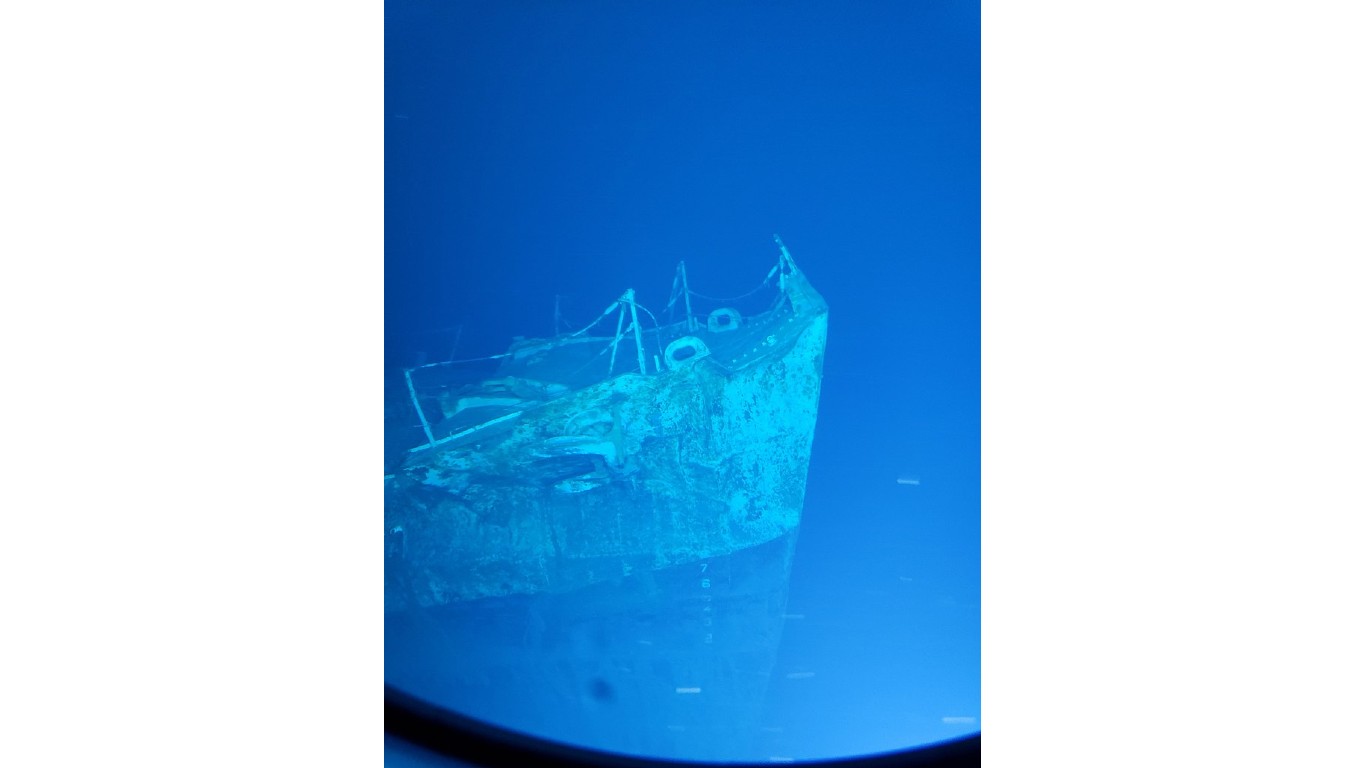
As long as there have been ships there have been shipwrecks, and people have endeavored to find them, seeking treasure, artifacts, and historical insight into long-gone worlds. Since oceanography and maritime archeologist Robert Ballard discovered the most famous shipwreck of all – the Titanic – in 1985, the quest for maritime wrecks has exploded. (Here are 29 shipwrecks found since the discovery of the Titanic.)
24/7 Tempo put together a list of notable shipwrecks that were found in 2022, drawing on sources including Live Science, Guinness World Records, Science X, Science Daily, CNN, ABC News, and the New York Post. Some of the discoveries on the list build on previous finds of a wreck, such as the recovery of a mast. Others are rediscoveries of wrecks that were lost and have reappeared.
Maritime archeologists and explorers have been making more shipwreck discoveries lately for several reasons: Records around the world have been digitized, making them more easily accessible; explorers have better tools for searches, such as autonomous underwater vehicles (AUVs) and remote operated vehicles (ROVs), allowing them to probe almost any ocean depth and to cover a wider area than had previously been practical; and the effects of climate change have lowered water levels in lakes and rivers, potentially exposing more remains.
For instance, a merchant vessel from the early 19th century that ran aground on Daytona Beach was exposed by the wind and waves of hurricanes Ian and Nicole. A drop in the level of the Mississippi River revealed a ferry boat that sank in 1915.
Click here to see 16 shipwrecks found in 2022
All shipwrecks have some historical significance, and the finds in 2022 were no exception. Among the discoveries were the British warship Gloucester that was carrying James Stuart, the future king of England. The sidewheel steamship the SS Pacific, which sank in 1875 and taking more than 300 people to their death, was found 23 miles off the Washington coast. The USS Destroyer Escort Samuel B. Roberts, sunk by the Japanese navy during World War II, was found at a depth of 22,523 feet – the deepest shipwreck ever discovered. (Here, on the other hand, are 20 warships that sunk and disappeared without a trace.)
A Mediterranean merchant ship
> Where found: Off Ma’agen Michael on the Israeli coast
> When found: Early 2022
> When sunk: 7th or 8th century
> Cause of sinking: Unknown
A merchant ship off the Israeli coast contained jars of well-preserved olives and figs. Items on the 36-foot-long ship indicated it had stopped at Cyprus and Egypt, and possibly other stops along the North African coast. This was at a time when trade between different Mediterranean countries was believed to have been disrupted by the rise of Muslim rule – a theory seemingly disproved by the contents of this vessel.
[in-text-ad]

A Norwegian ship
> Where found: Lake Mjøsa, Norway
> When found: Fall 2022
> When sunk: Between the 14th and mid-19th century
> Cause of sinking: Unknown (possibly bad weather)
Explorers searching for unexploded ordnance from World War II in the 140-square-mile Lake Mjøsa, Norway’s largest lake, instead found a ship whose construction indicates that it was built no earlier than 1300 and no later than 1850. The 33-foot long vessel was found at a depth of 1,350 feet and is believed to be one of Norway’s oldest shipwrecks.
Øyvind Ødegård, a maritime archaeologist at the Norwegian University of Science and Technology, told Live Science that the find is significant because it shows the transition of shipbuilding from Viking ships – which were almost the same at both ends – to medieval designs with a bow and stern.

The Swedish warship Äpplet
> Where found: Near the island of Vaxholm
> When found: Winter 2021 and spring 2022
> When sunk: 1659
> Cause of sinking: Scuttled by Swedish officials
The Swedish warship Äpplet, sister ship of the vessel Vasa – known for sinking soon after it first set sail – was itself deliberately sunk in 1659 after it was determined that it wasn’t worth repairing damage it had sustained. Archaeologists from Sweden’s Museum of Wrecks and navy personnel made the first dives to the wreck in December 2021, followed by a more thorough survey in spring 2022. The discovery of Äpplet (the Swedish word for “apple”) might help archaeologists better understand what caused the sinking of the Vasa, which was salvaged in 1961.
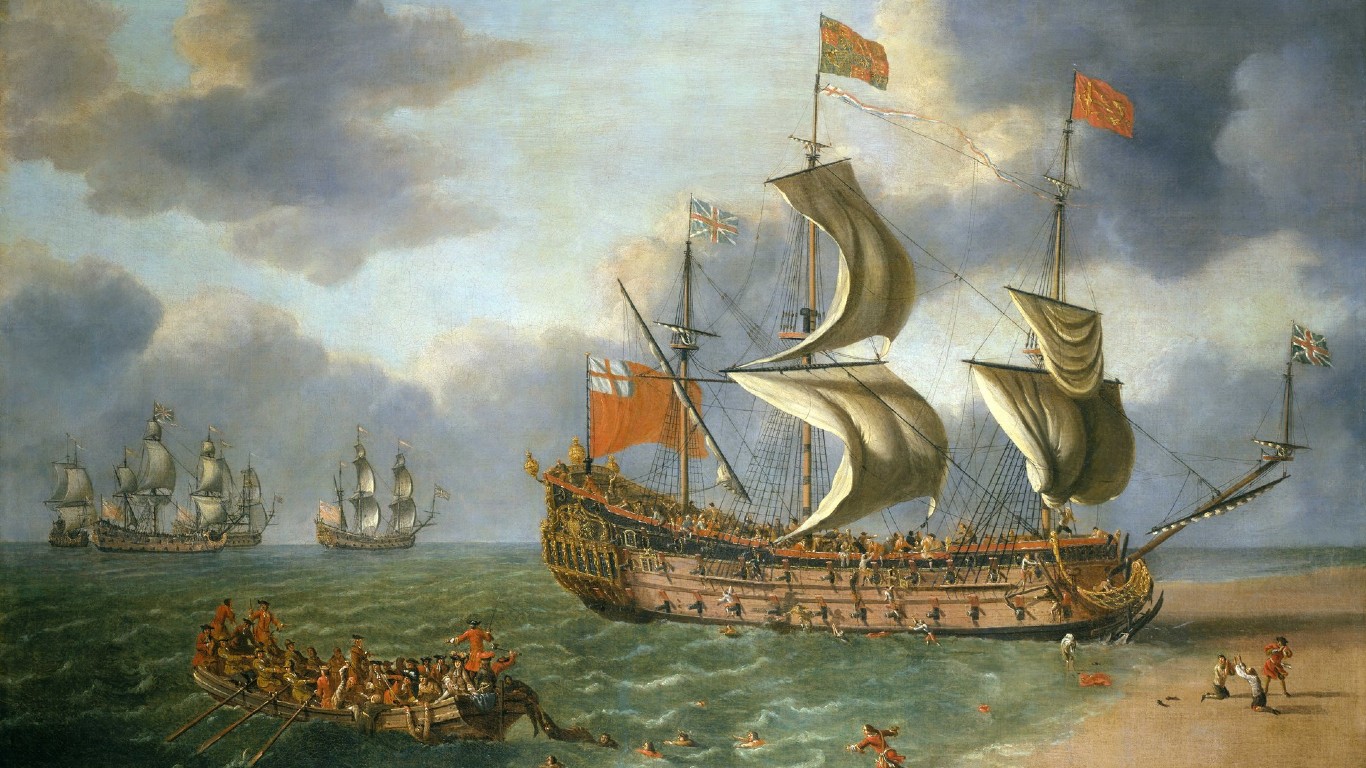
The English warship Gloucester
> Where found: Off the coast of Norfolk, England
> When found: June 2022
> When sunk: May 6, 1682
> Cause of sinking: Ran aground
The doomed warship Gloucester was carrying the future king of England James Stuart when it ran aground on a sandbank on May 6, 1682. Stuart, the Duke of York at the time of Gloucester tragedy, was the Catholic heir to the English throne during a period of religious tension in England. The ship was chosen to pick up the duke’s wife and their households from Edinburgh. Stuart barely survived the disaster, which claimed the lives of hundreds of people.
The wreck of the Gloucester is half-buried in the seabed and its precise location was unknown until brothers Julian and Lincoln Barnwell, with their friend James Little, found it after a four-year search. Among the artifacts recovered is the ship’s bell.
[in-text-ad-2]
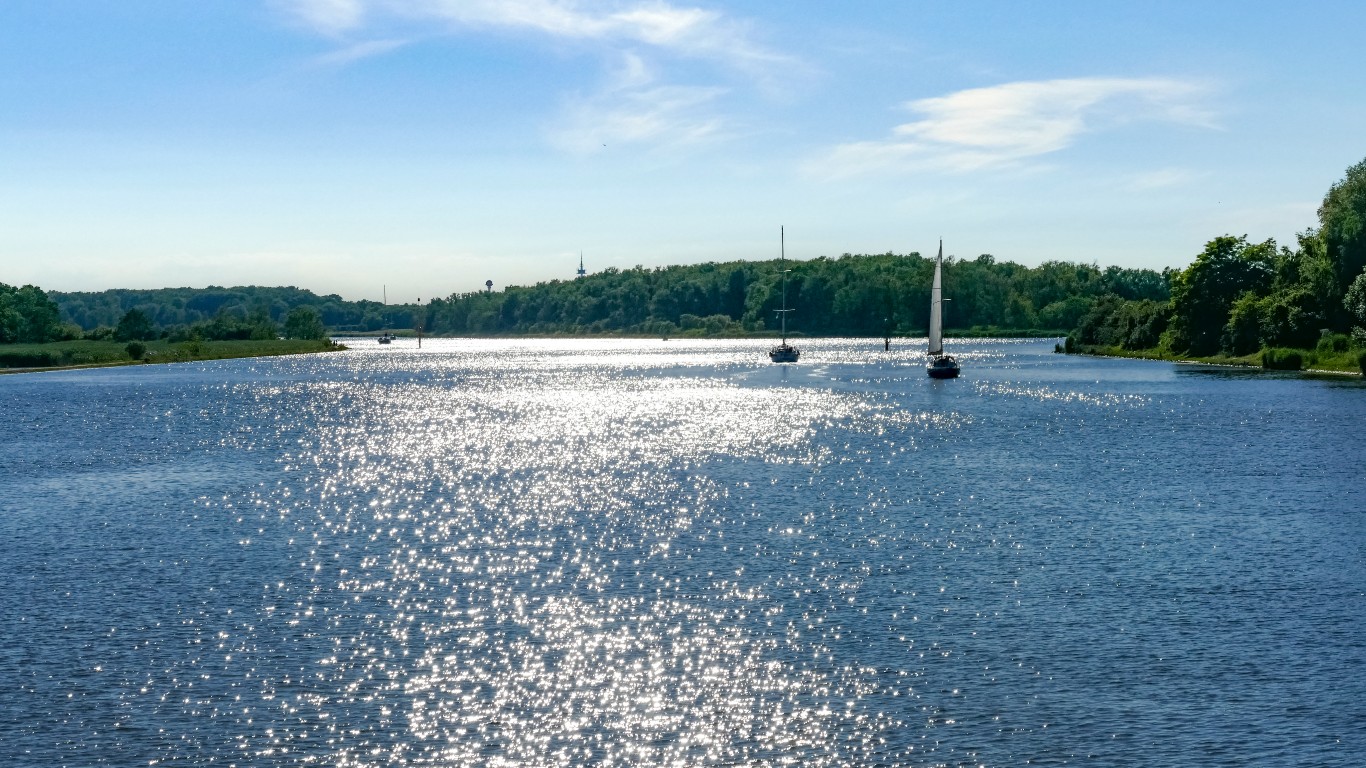
A German cargo ship
> Where found: River Trave, near Lübeck
> When found: July 2022
> When sunk: December 1680
> Cause of sinking: Ran aground
Shipping authorities doing routine measuring work in July came upon the remains of a German cargo ship in the River Trave, between the Baltic coast cities of Lübeck and Travemünde Researchers believe the ship sank during the end of the Hanseatic League period, when a web of cities in northern European countries dominated maritime trade in the Baltic Sea.
The ship measured at least 66 feet long and was carrying quicklime, used in construction, from Scandinavia to Germany. Explorers speculate that the ship was trying to negotiate a bend in the river and sank quickly. It did not capsize and almost half of its cargo was still onboard. A layer of fine mud carried by the river protected the wooden structure from rotting.
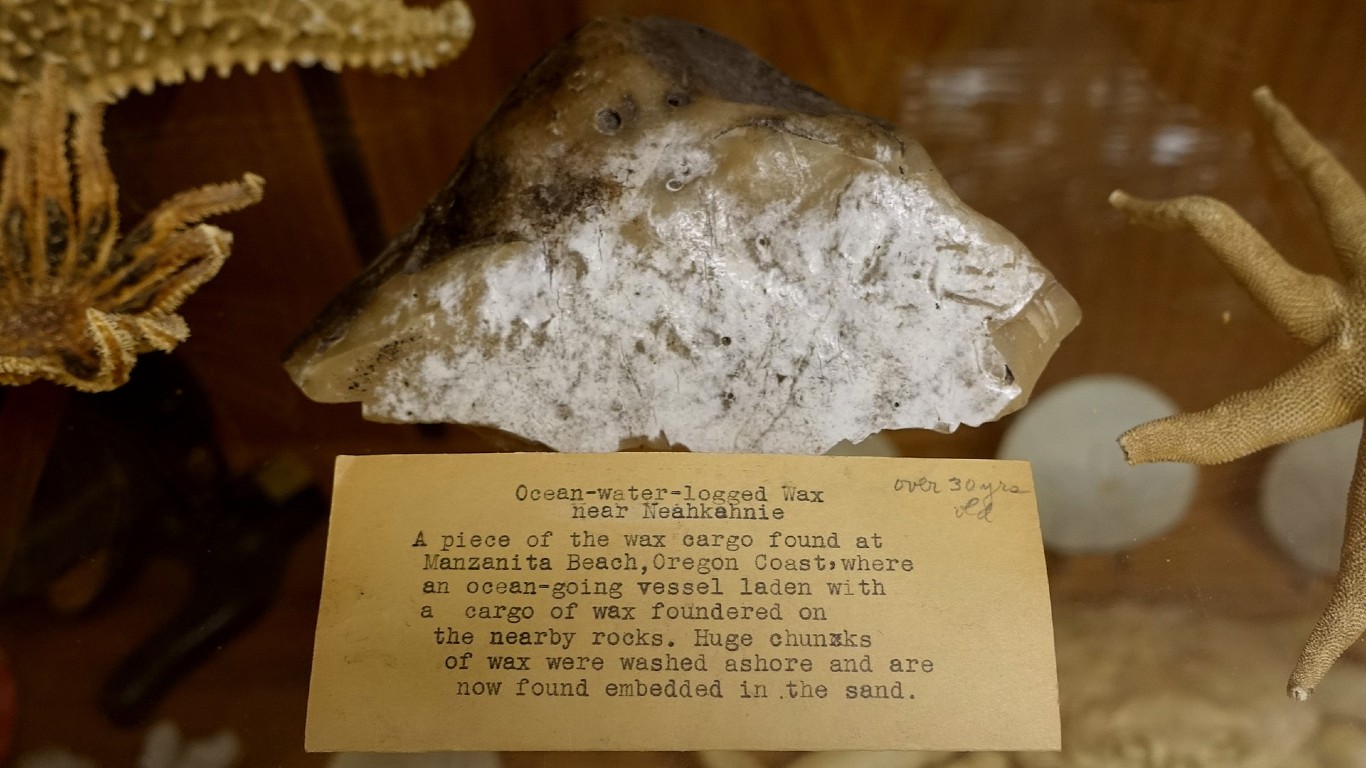
The Spanish merchant ship Santo Cristo de Burgos
> Where found: Sea caves on the northern Oregon coast
> When found: June 2022
> When sunk: 17th century
> Cause of sinking: Possibly disabled by a storm
In the sea caves north of Manzanita in northern Oregon in June, commercial fisherman Craig Andes discovered the weathered timbers of an old wooden ship sticking out of the sand. They are believed to have belonged to the Santo Cristo de Burgos, also called the Beeswax, a Spanish merchant ship that left Manila in the Philippines in 1693 loaded with fine Asian trade goods destined for Mexico. It was called the Beeswax because wax was part of its cargo. Reports of the search for the ship was an inspiration for the 1985 film “The Goonies.”
[in-text-ad]

A merchant vessel
> Where found: Daytona Beach Shores
> When found: November 2022
> When sunk: Early 19th century
> Cause of sinking: Ran aground
Beachgoers at Daytona Beach Shores were surprised to find the weathered remains of a ship’s hull exposed by beach erosion in November in the wake of hurricanes Ian and Nicole. Marine archeologists dated the merchant shipwreck from the 1800s. The vessel is estimated to be 80 to 100 feet long and archeologists believe it was a cargo ship.
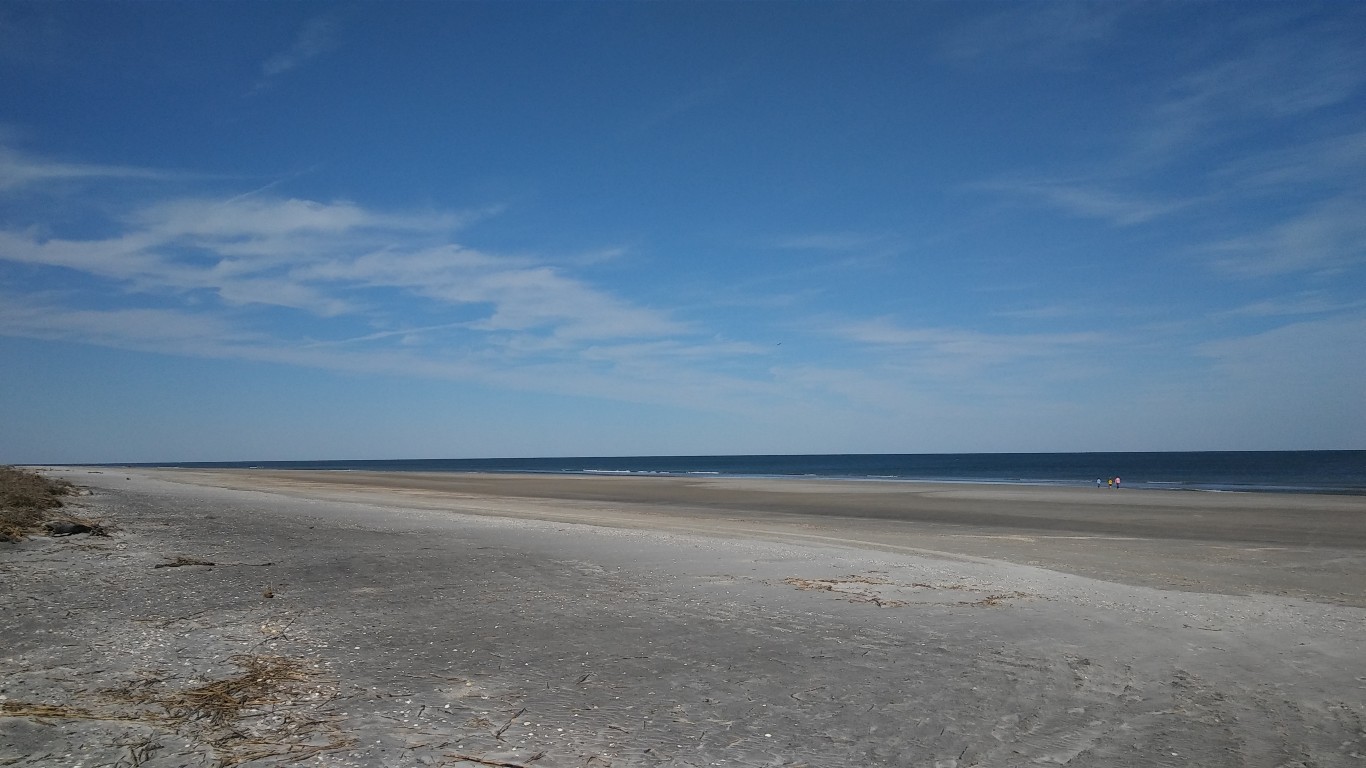
An unknown ship
> Where found: Little Talbot Island, Florida
> When found: November 2022
> When sunk: 1800s
> Cause of sinking: Unknown
The winds of hurricanes Ian and Nicole also exposed another shipwreck in Florida. Pieces of a merchant vessel that ran aground off the coast of Florida were first exposed by wind and waves in 1987, then became buried by sand over time at Little Talbot Island, a barrier island north of Jacksonville. Among the parts of the ship discovered was the hull. Archeologists are trying to nail down the date range and geographic origins of the ship as well as its identity.
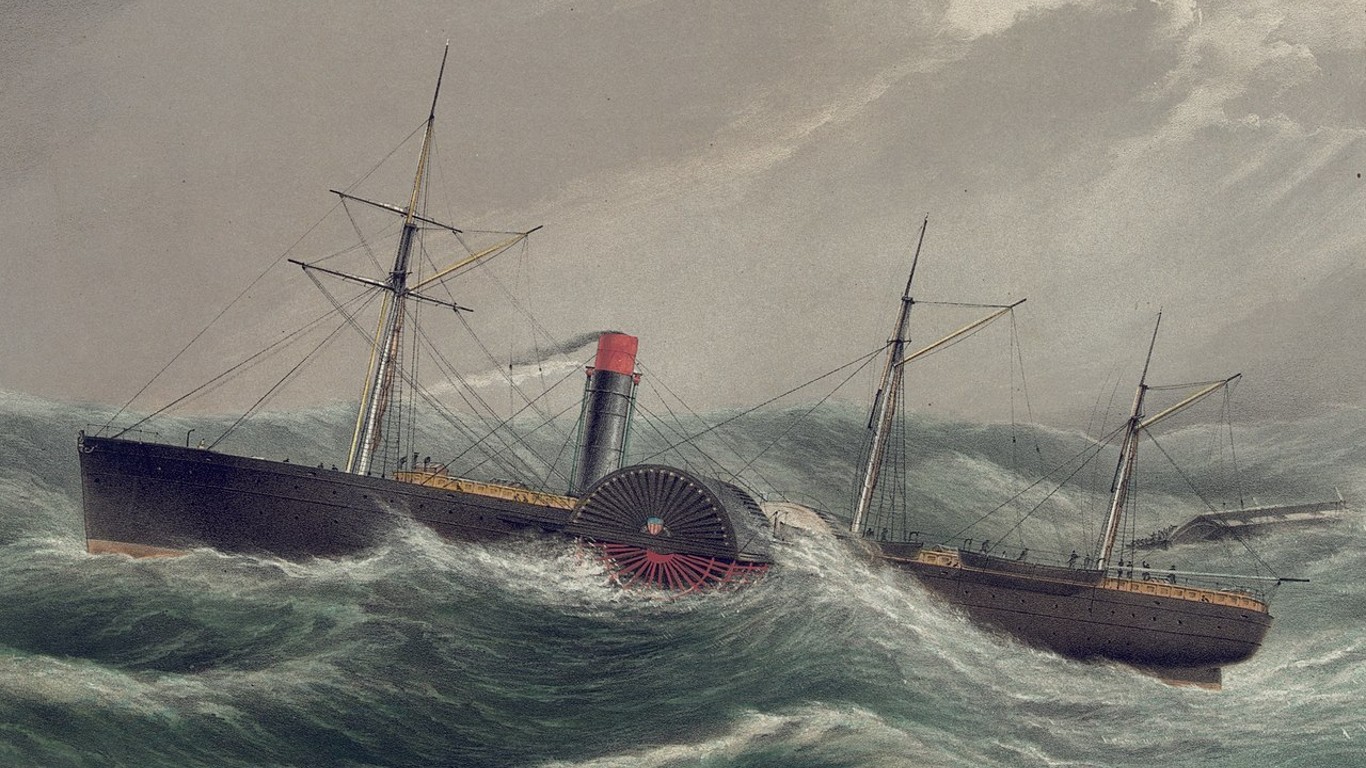
The steamship SS Pacific
> Where found: South of Cape Flaherty off the Washington coast
> When found: December 2022
> When sunk: November 1875
> Cause of sinking: Collision with the cargo ship Orpheus
People in the northwestern part of Washington state knew well the story of the doomed sidewheel steamship, which sank after a collision during a violent storm in 1875. More than 300 people died, and only two survived, making the ship’s sinking the deadliest maritime disaster in the region.
[in-text-ad-2]

The schooner-barge Atlanta
> Where found: Lake Superior, 35 miles off Deer Park, Michigan
> When found: March 2022
> When sunk: 1891
> Cause of sinking: Storm
Lake Superior is the world’s largest freshwater lake by area, and some of the storms that whip up there are legendary. Once such tempest in 1891 sank the 172-foot schooner-barge Atlanta. The vessel, carrying a cargo of coal, was being towed by the steamer Wilhelm when both ships were enveloped by a gale. The storm snapped the towline, and damaged the Atlanta’s masts and foresail, and the ship sprang a leak. The crew of seven jumped into a lifeboat and after rowing for several hours came within sight of the Crisp Point Life-Saving Station. While they were trying to land their boat near the station, it overturned and only two of the crew made it safely to the beach.
The ship was found in 650 feet of water, its name board clearly visible.

A colonial boat and a schooner
> Where found: Off the coast of Cartagena, Colombia
> When found: June 2022
> When sunk: 19th century
> Cause of sinking: Unknown
While conducting underwater monitoring of the famed Spanish galleon San José, discovered by the Colombian navy in 2015, off the Caribbean port of Cartagena in June, naval officials came upon two other vessels nearby at a depth of 900 feet. The ships are a colonial boat and a schooner believed to date from around the time Colombia fought for its independence from Spain about 200 years ago. “We now have two other discoveries in the same area that show other options for archaeological exploration,” navy commander Admiral Gabriel Pérez said.
[in-text-ad]
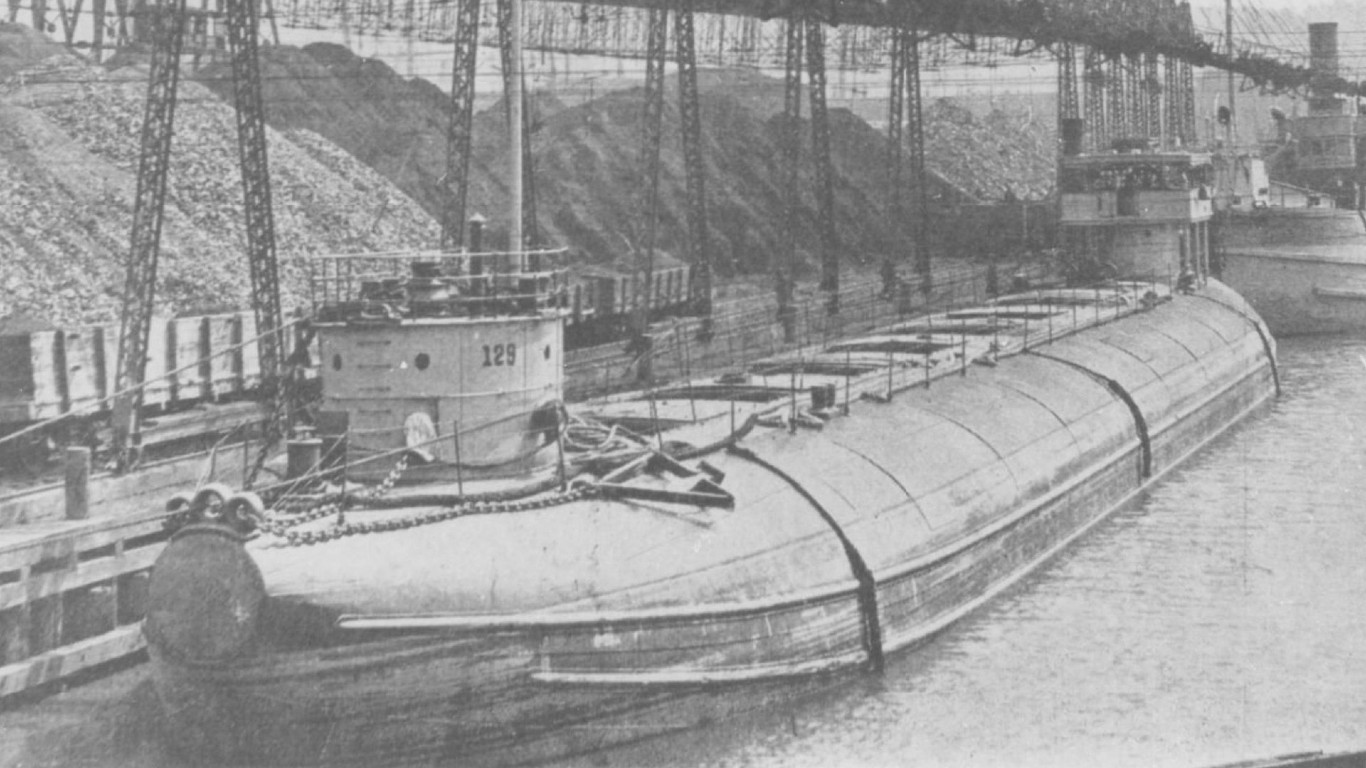
Barge 129
> Where found: Lake Michigan, off Vermilion Point, Michigan
> When found: October 2022
> When sunk: 1902
> Cause of sinking: Snapped towline and collision damage in rough seas
In October, researchers with the Great Lakes Shipwreck Historical Society discovered the remains of a 292-foot vessel at a depth of 650 feet, 35 miles off Vermilion Point, and confirmed that it was Barge 129 – one of just 44 whaleback barges ever made. Vessels of this kind traversed the Great Lakes in the 19th century. The barge sank to the bottom of Lake Michigan in 1902 after a strong storm snapped a towline attaching it to another boat – which tried to retrieve the barge, but ended up damaging it fatally. The crew got to the other boat before the barge sank.
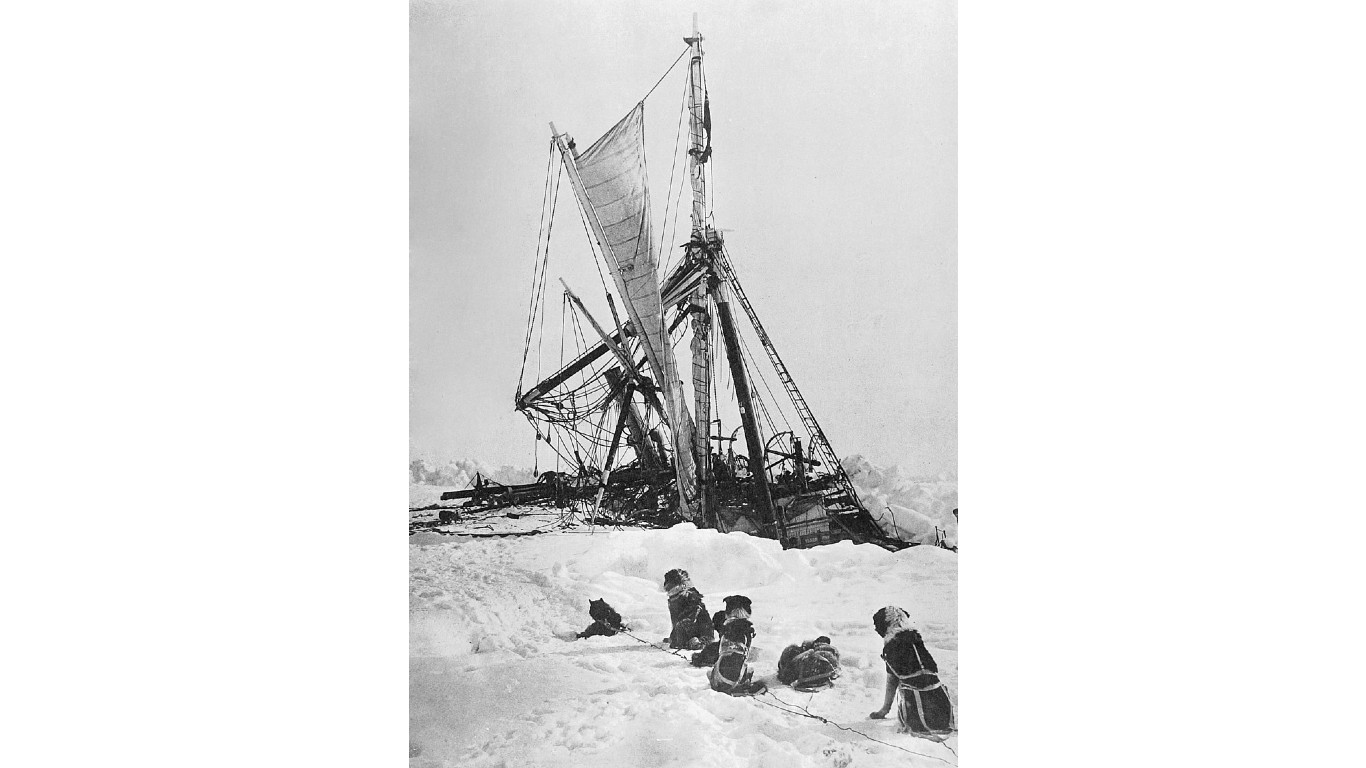
The barquentine Endurance
> Where found: Weddell Sea, Antarctica
> When found: March 2022
> When sunk: 1915
> Cause of sinking: Crushed by ice
The Endurance, the lost vessel of Antarctic explorer Sir Ernest Shackleton, was discovered at the bottom of the Weddell Sea in March. The ship was crushed by sea ice and sank in 1915, forcing Shackleton and his men to escape on foot and in small boats. All of the crew survived the ordeal. The demise of the ship was chronicled by filmmaker Frank Hurley. The Endurance was found by the Falklands Maritime Heritage Trust. The wreck is a designated monument under the international Antarctic Treaty and is not to be disturbed.
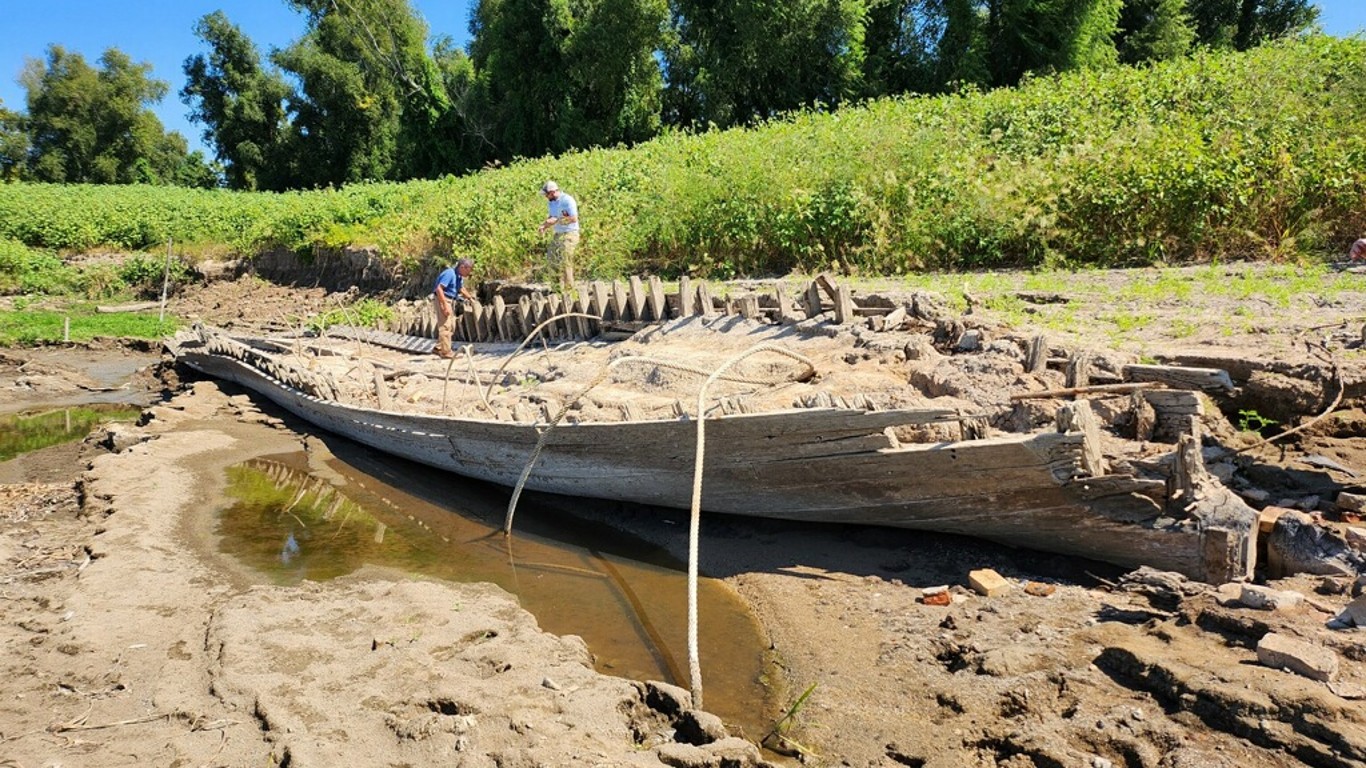
The ferry boat SS Brookhill
> Where found: Mississippi River near Baton Rouge
> When found: October 2022
> When sunk: Sept. 29, 1915
Treasure hunter Patrick Ford rediscovered what was left of a sunken ferry boat on the banks of the Mississippi River in Louisiana. The remains of the vessel were exposed because the Mississippi River had fallen to its lowest level since 1992 – the last time the wreck had been seen. Louisiana State archaeologist Chip McGimsey said what Ford had found was an early Baton Rouge ferry boat called the SS Brookhill, used to carry wagons, livestock and people between Port Allen and Baton Rouge. He said the boat sank in a storm on Sept. 29, 1915 when logs floating downriver slammed into its side.
[in-text-ad-2]

The German U-boat SM U-111
> Where found: 40 miles off the coast of Virginia (exact location kept secret)
> When found: July 2022
> When sunk: 1922
> Cause of sinking: Scuttled by the U.S. Navy
The remains of U-111, a World War I German U-boat, were discovered at a depth of 400 feet off the Virginia coast. After Germany agreed to an armistice in 1918, the U-boat was surrendered to the British, who turned it over to the United States to study and reverse-engineer. In 1922, the U.S. Navy used the submarine for target practice and later sank the vessel with depth charges, but its exact location was not disclosed. In early July, wreck researcher Erik Petkovic and his colleagues found the submersible with a remotely operated underwater vehicle.
The Destroyer Escort USS Samuel B. Roberts
> Where found: Philippine Sea, off the coast of Samar, the Philippines
> When found: June 17-24, 2022
> When sunk: 1944
> Cause of sinking: Japanese naval attack
The USS Destroyer Escort Samuel B. Roberts, sunk by the Japanese Navy in a battle in the Philippine Sea in 1944, was discovered at a depth of 22,523 feet, making it the deepest shipwreck ever found. The discovery of the Roberts occurred one year after another U.S. vessel, the USS Johnston, was found in about the same area at a depth of 21,222 feet – the deepest shipwreck found up to that point. The successful search for the Roberts was led by adventurer, explorer and former U.S. Navy officer Victor Vescovo.
The Average American Has No Idea How Much Money You Can Make Today (Sponsor)
The last few years made people forget how much banks and CD’s can pay. Meanwhile, interest rates have spiked and many can afford to pay you much more, but most are keeping yields low and hoping you won’t notice.
But there is good news. To win qualified customers, some accounts are paying almost 10x the national average! That’s an incredible way to keep your money safe and earn more at the same time. Our top pick for high yield savings accounts includes other benefits as well. You can earn up to 3.80% with a Checking & Savings Account today Sign up and get up to $300 with direct deposit. No account fees. FDIC Insured.
Click here to see how much more you could be earning on your savings today. It takes just a few minutes to open an account to make your money work for you.
Our top pick for high yield savings accounts includes other benefits as well. You can earn up to 4.00% with a Checking & Savings Account from Sofi. Sign up and get up to $300 with direct deposit. No account fees. FDIC Insured.
Thank you for reading! Have some feedback for us?
Contact the 24/7 Wall St. editorial team.

 24/7 Wall St.
24/7 Wall St.